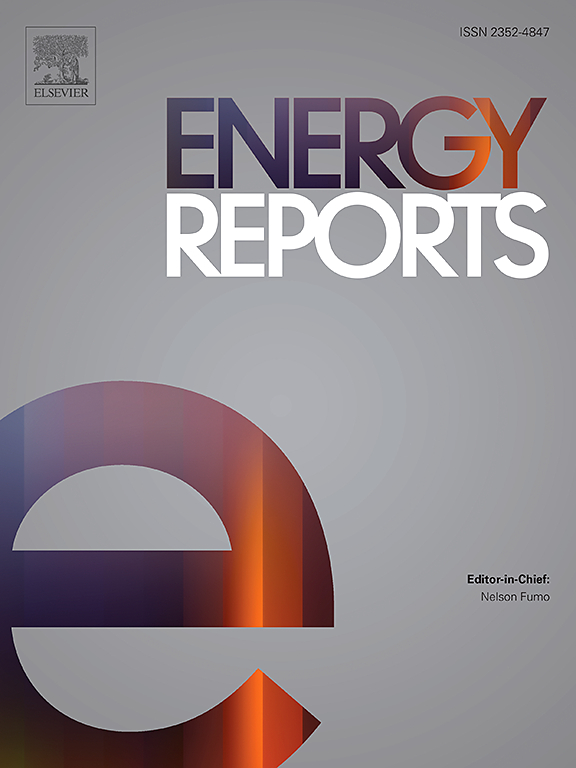Environmental implications of alternative production, distribution, storage, and leakage rates of hydrogen from offshore wind in Norway
IF 5.1
3区 工程技术
Q2 ENERGY & FUELS
引用次数: 0
Abstract
Renewable hydrogen offers compelling climate mitigation prospects, with Norway possessing the opportunity to become a main global producer given its unique combination of wind energy potential, available infrastructure, and political motivation. However, comprehensive environmental impact assessments of hydrogen from offshore wind are lacking and hydrogen leakage rates remain uncertain. A life-cycle assessment of hydrogen production from offshore wind farms in Norway is presented, where different combinations of turbines (floating or bottom-fixed), storage options (tank or salt cavern), and distribution methods (trucks or pipelines) are considered. Climate change impacts are assessed across the supply chain using global warming potential 100 (GWP100) and 20 (GWP20) and include hydrogen leakage contributions. The results range from 1.56 ± 0.14–2.28 ± 0.14 kg CO2-eq/kg H2 for GWP100 and 2.96 ± 0.76 and 3.75 ± 0.76 kg CO2-eq/kg H2 for GWP20 and are on average 55 % and 45 % lower than those of blue hydrogen, respectively. At a default rate of 5 %, hydrogen leakage contributes 50–63 % of the total impact for GWP20 and 25–37 % for GWP100. If higher-end leakage rates from literature are considered, the impacts increase to 3.46 kg CO2-eq/kg H2 for GWP100, which is still lower than that of blue hydrogen. The scenario combining bottom-fixed turbines, salt cavern storage, and pipeline distribution presents the lowest environmental impacts. However, while bottom-fixed turbines generally offer lower impacts, floating turbines pose lesser risk to marine biodiversity. Overall, infrastructure represents the main driver of environmental impacts. Mitigation in this area will improve potential benefits.
挪威海上风能替代生产、分配、储存和泄漏率对环境的影响
可再生氢具有令人信服的减缓气候变化的前景,鉴于挪威独特的风能潜力、现有的基础设施和政治动机,它有机会成为全球主要的氢生产国。然而,缺乏对海上风电氢气的综合环境影响评估,氢气泄漏率仍然不确定。本文介绍了挪威海上风力发电场产氢的生命周期评估,其中考虑了不同的涡轮机组合(浮动或底部固定)、储存选择(储罐或盐洞)和分配方法(卡车或管道)。使用全球变暖潜势100 (GWP100)和20 (GWP20)评估整个供应链的气候变化影响,并包括氢泄漏贡献。结果范围从1.56 ±0.14 - -2.28 ±0.14 GWP100和2.96公斤每公斤CO2-eq H2 ± 0.76和3.75±0.76 CO2-eq 公斤/公斤H2 GWP20和平均55 % 45 %低于蓝色的氢,分别。在违约率为5 %时,氢气泄漏对GWP20和GWP100的总影响分别为50-63 %和25-37 %。如果考虑文献中较高的泄漏率,GWP100的影响增加到3.46 kg CO2-eq/kg H2,仍然低于蓝氢。结合底部固定涡轮机、盐洞储存和管道分配的方案对环境的影响最小。然而,虽然底部固定涡轮机通常提供较低的影响,但浮动涡轮机对海洋生物多样性的风险较小。总体而言,基础设施是环境影响的主要驱动因素。这方面的缓解将提高潜在效益。
本文章由计算机程序翻译,如有差异,请以英文原文为准。
求助全文
约1分钟内获得全文
求助全文
来源期刊

Energy Reports
Energy-General Energy
CiteScore
8.20
自引率
13.50%
发文量
2608
审稿时长
38 days
期刊介绍:
Energy Reports is a new online multidisciplinary open access journal which focuses on publishing new research in the area of Energy with a rapid review and publication time. Energy Reports will be open to direct submissions and also to submissions from other Elsevier Energy journals, whose Editors have determined that Energy Reports would be a better fit.
 求助内容:
求助内容: 应助结果提醒方式:
应助结果提醒方式:


